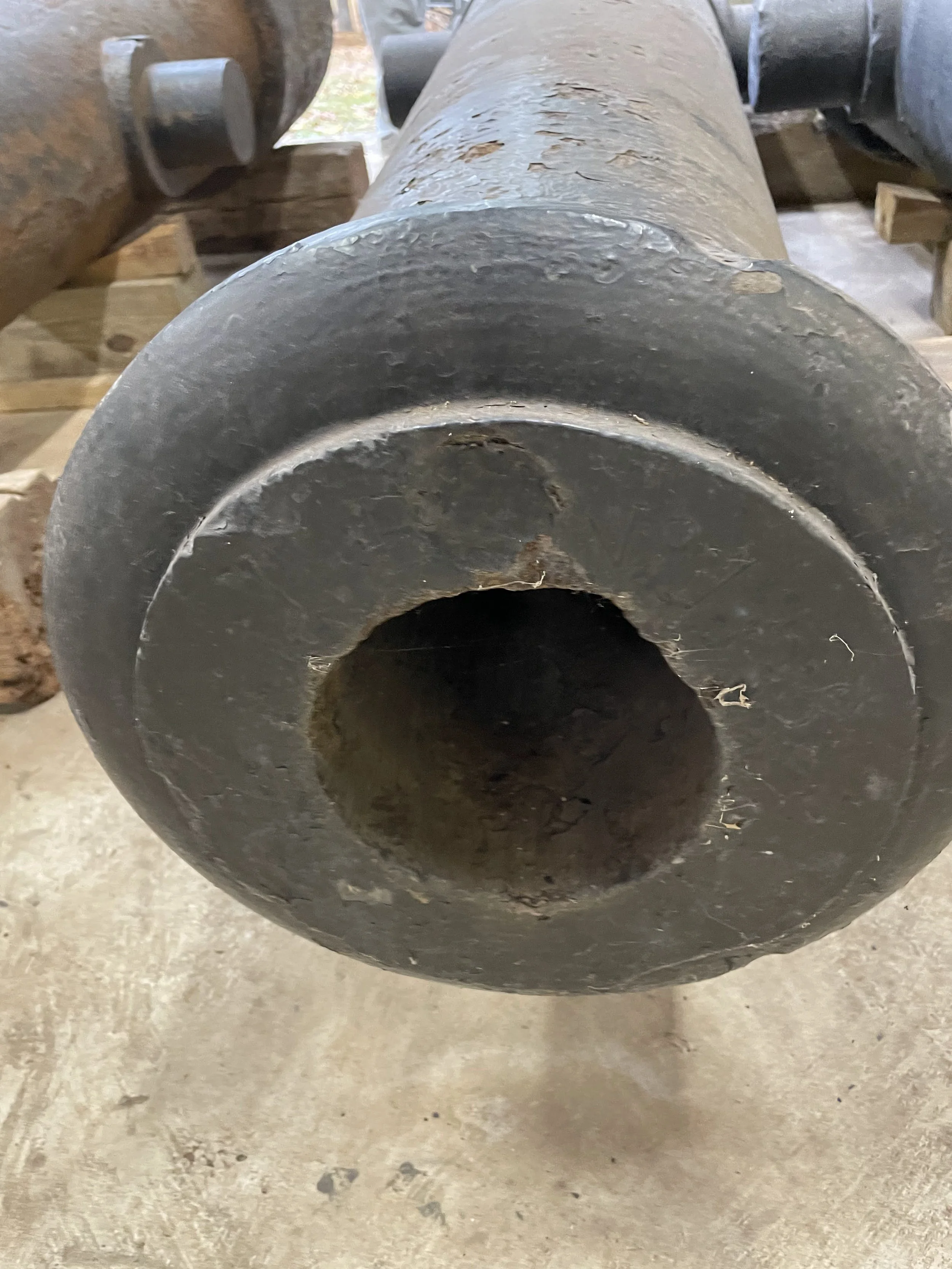The US Army 24-Pounders, Pattern 1819, at Fort Branch
US Army 24-Pounder, Pattern 1819, Registry Number 164, at Fort Branch near Hamilton, North Carolina.
Two US Army 24-Pounders, Pattern 1819, are among the extraordinary collection of original cannons at Fort Branch near Hamilton, North Carolina. Along with the other cannons, they were thrown into the Roanoke River to prevent capture at the end of the American Civil War. All of the cannons were recovered from the Roanoke River in the 1970s.
The two 24-Pounders, Pattern 1819, are:
Number 158 cast by Columbia Foundry in 1828. Original weight 5,540 pounds
Number 164 cast by Columbia Foundry in 1828. Original weight 5,512 pounds.
Columbia Foundry cast cannon for the United States from 1800 to 1854. It was located in Georgetown in the District of Columbia.
At Fort Branch, there were three 24-Pounders marked on an 1864 map. Two were part of the battery facing the river. A third was mounted on the land face of the fort. The 24-Pounder was used to fire either solid shot or grapeshot.
By 1861, the 24-Pounder, Pattern 1819, was classified as a Siege and Garrison gun. These were typically cannons of middling weight - heavier than a field gun but lighter than a seacoast gun. They could be used either in fortifications (hence “garrison”) or as part of a mobile siege train. However, the type had also be issued to seacoast fortifications in significant numbers in previous decades, and though it had been superseded in the seacoast role, it was still found in coastal forts in 1861.
For instance, at Fort Macon in 1861, the only heavy armament of this third system fort was seventeen 24-Pounders all of which had been at the fort since 1836. During the 1862 siege, the eighteen 24-Pounders would still be a third of the fort's total armament (many of the other heavy cannon having come from the "haul" at Norfolk).
The 24-Pounder, Pattern 1819, could be mounted on siege and garrison carriages (which resembled a field artillery carriage but was heavier to take a larger gun) or on a barbette or casemate carriage generally found in coastal fortifications.
Both of the 24-Pounders bear a “test scar” where metal was taken from the cannon to test its strength in the late 1840s following the Peacemaker disaster aboard USS Princeton. These scars are commonly seen on US Army cannons which were cast before the mid 1840s.
A US Army 24-Pounder, Pattern 1819, Registry Number 158, sits between two other cannons (a 32-Pounder of 57 Hundredweight on the left and a 4.62-Inch Gibbon and Andrews Rifle on the right) at Fort Branch near Hamilton, North Carolina.
Four US Army 24-Pounders, Pattern 1819, and a US Army 30-Pounder Parrott may be seen in this detail of a photo taken at Fort Richardson in Arlington (part of the defenses of Washington). The 1st Connecticut Heavy Artillery is seen at drill. Two of the 24-Pounders are mounted on garrison carriages (which look like overgrown field carriages) while two other are mounted on front pintle barbette carriages. Round shot and grapeshot can be seen stacked between the cannons. Detail from Library of Congress photo: https://www.loc.gov/item/2012646718/
Muzzle face of US Army 24-Pounder, Pattern 1819, Registry Number 164 at Fort Branch
Muzzle face of US Army 24-Pounder, Pattern 1819, Registry Number 158 at Fort Branch
“I.M., C.F.” may be seen on the left trunnions standing for “John Mason, Columbia Foundry.”
The 1828 date is on the right trunnions. (Unfortunately this is the best photo I got of that date!)
US Army 24-Pounder, Number 164, photographed from above.
Remains of the original siege carriages are displayed at Fort Branch. Original Civil War wooden carriages are quite rare.
Remains of the original siege carriages are displayed at Fort Branch. Original Civil War wooden carriages are quite rare.
A Replica 24-Pounder, Pattern 1819, is displayed at Fort Macon on a front pintle barbette carriage.
